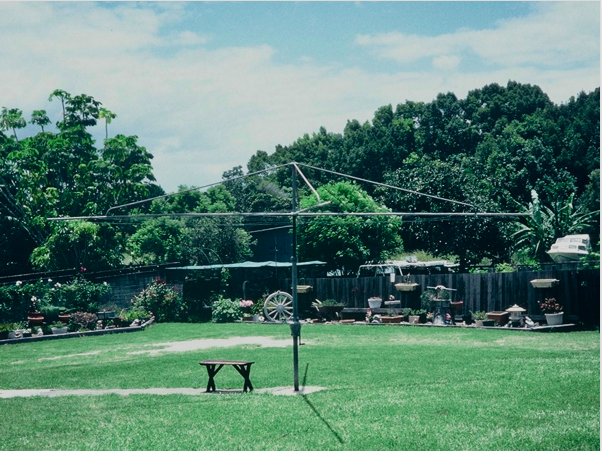
A ‘steel tree’ in its preferred landscape.
The rotary clothesline, better known as a ‘Hills Hoist’ for its manufacturer, populated every suburban quarter acre block post World War 2. The landscape was usually a lawn finely cut by a ‘Victa’ motor mower. Two great Aussie designs, if not inventions. Hills today, Victa next week.
From the early 1900’s several Australian firms had been making drying lines, strung in a rotating square, as a better system than those stretched between posts. From 1925 Gilbert Toyne produced a rotary line that could be adjusted by a handle to allow ease of hanging and then raised to give air and sunlight to the clothes, but they were expensive and didn’t sell well.
In 1946, unable to buy Toyne’s patent, Lance Hills and his brother-in-law Harold Ling started making a version of these rotating and elevating drying line. This was not only in response to his wife’s requirements for a better drying line, but also to create a business post WW2. And what a business: in the next 40 years a million ‘Hills Hoists’ were sold.
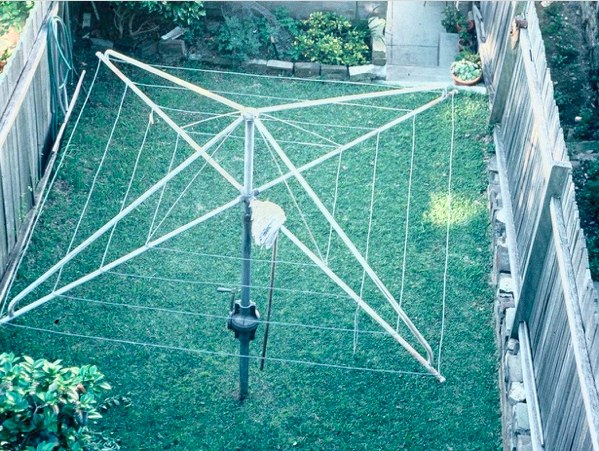
Rotary clothes hoist in the rear garden of a Sydney Paddington terrace house.
Not all ended up in expansive gardens. This one covers the entire backyard; requiring ‘air rights’ over the adjacent property to rotate. And not all ended up on lawn.
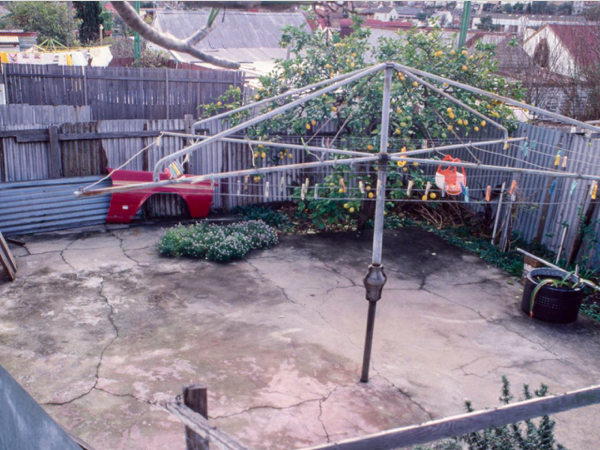
Backyard in Balmain, inner-west Sydney
Balmain was predominantly settled by Italians in the 50’s and 60’s. When this ‘Balmain tree’ and ‘Balmain grass’ were demolished the builders found three layers of concrete, one on top of each other: red, white and green: the Italian flag. But no room for a replacement Hills Hoist after the alts + adds.
On the other side of Balmain, with a far more salubrious waterfront, it is said Bryan Brown installed a Hills Hoist in his, and Rachel Ward’s, glamour home; you can take the boy out of Panania, but not Panania out of the boy.
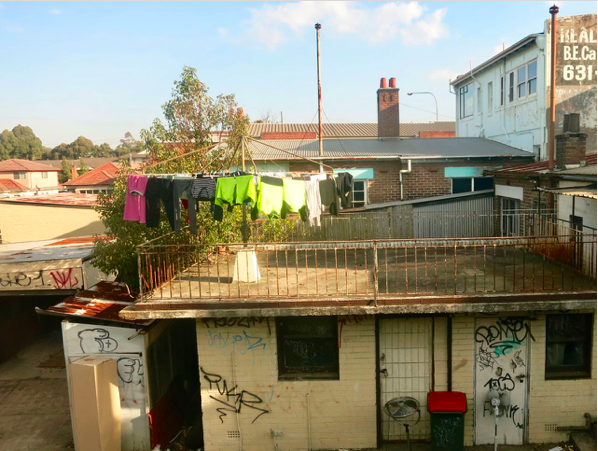
Second level backyard in Wentworthville, Sydney’s west
Not all the Hills Hoists were in gardens. Or rather not all backyards were gardens, as Don Burke so expertly exploited. Even on an elevated terrace the ‘steel tree’ survived to dominate the outdoor space.
After 40 years of service as a children’s’ play frame, a cricket batting practice net, a tent frame for the 21st birthday keg, as well as millions of washes, the Hills Hoist waned in popularity. This was partly because of smaller block sizes, partly changes in household demographics (declining family size), and partly purchasers preferring smaller fold up lines (which Hills, the company, also made).
Power-hungry tumble dryers seemed so much easier, just as there was a rise in interest in sustainability. Clothes drying on a line was re-thought, simpler and under cover, so a rain shower wasn’t a setback whilst the family was out (at work or school).

View into a drying veranda / courtyard in autonomous house on NSW south coast
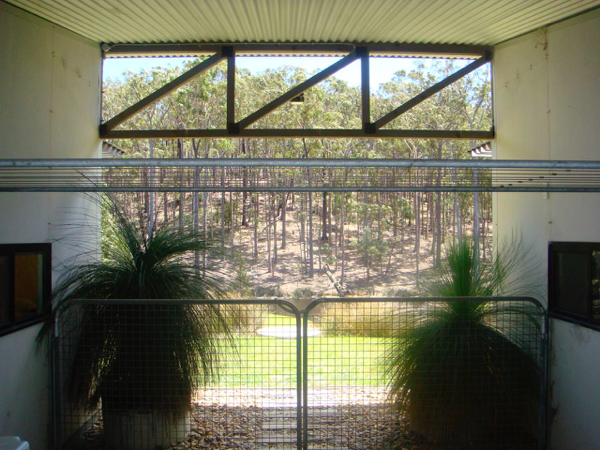
View out from the drying veranda / courtyard (architect: environa studio)
This drying line, in a covered breezeway, getting sun and a breeze, but no rain, substitutes for a modern dryer that would be hard to run off the PV’s in this totally autonomous house. Despite being on acreage it’s a design model for how ‘steel trees’ can be adapted and incorporated into our suburban dwellings of the future, on restricted sites.
The rise of townhouses and apartments, without a backyard or garden, begs the question of where does the ‘steel tree’ go now? Upmarket apartments often ban air drying of clothes on balconies, deemed to be ‘unsightly’, shunning the idea of hanging clothes or beach towels over the balcony.

2 storey Montague Flats in Goulburn NSW with an open top floor for laundries and clothes lines (1920’s, architect: unknown)
Some codes require tumble dryers be fitted inside apartments, contrary to the desire to reduce energy use and CO2 gases. But others require space for drying lines be set aside, either on balconies or roof tops, and are gratefully used. None seem to reach the elegance if the 20’s and 30’s flats with whole floors for drying clothes.

Balconies with drying lines unashamedly on show (architect: environa studio)
Air does more to dry clothes than sun, but sunlight can freshen clothes and remove some bacteria. This is to be preferred to tumble drying where the aggressive motion, moisture and heat can only accelerate the deterioration of the fabric of the clothes and dwelling.
Many apartment blocks in SE Asia have semi-enclosed service balconies at the ends of each floor for drying lines, even when they have no external private balconies to each apartment.

End balconies for drying lines in an apartment block in Ho Chi Minh city in Vietnam.
This idea, widely used on relatively modest flats, has been translated to a very upmarket semi-outdoor laundry with tumble dryers (and AC exhausts) in a condominium, called The Troika, designed by Norman Foster in Kuala Lumpur.
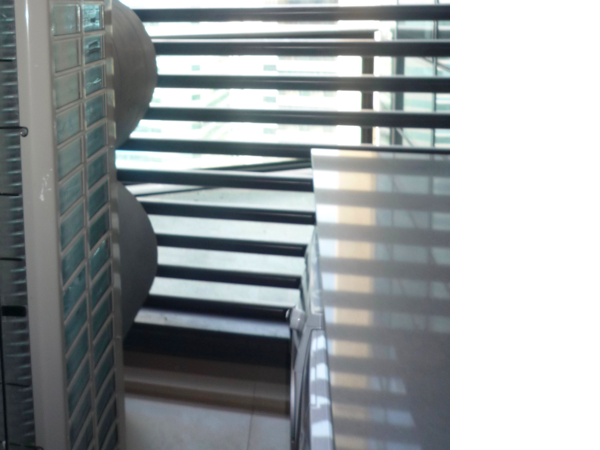
Interior of the open air, but securely battened, service area containing washers and dryers in ‘The Troika’ in KL (architect: Norman Foster, 2010-2)
We need to be re-consider how we incorporate natural drying into new building types, where the old ‘steel tree’ is no longer appropriate. One possibility is to extend the use of veranda spaces, or balconies, covering the drying line in the advent of rain when no-one can ‘bring the washing in’.
“Monday is washing day. Is everybody happy?”
plus 1 / plus one / +one is a collective of designers and artists promoting sustainability and Australian design. You can contact them at plus1.plusone.one@gmail.com

